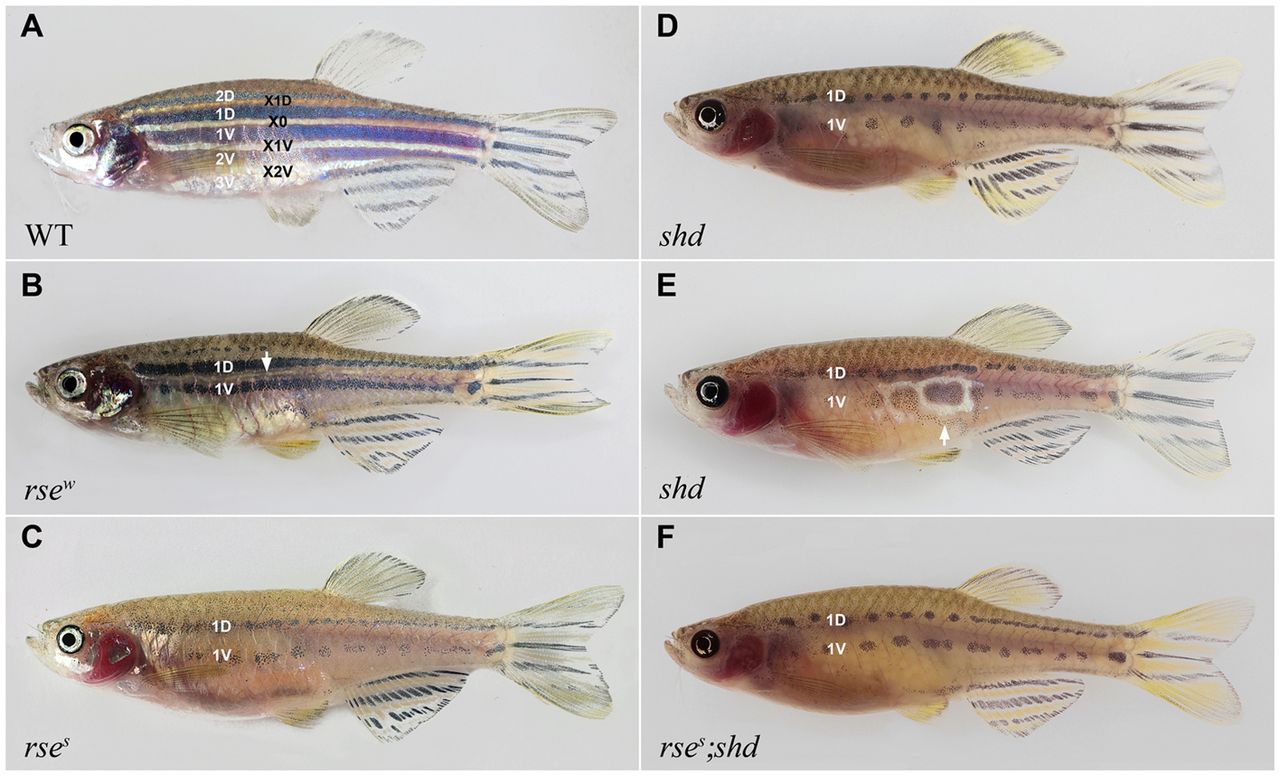Fig. 1 Adult phenotypes of iridophore mutants. (A) Wild-type fish. To denote individual stripes, we follow the nomenclature of Parichy et al. (Parichy et al., 2009), which we have extended by naming the interstripes, the central interstripe being X0. Additional stripes and interstripes added dorsally and ventrally during development are numbered according to their sequence of appearance. (B,C) rse mutants. Weak (B) and strong (C) rse alleles show a reduction of iridophores and melanophores. In strong rse mutants (Fig. 1C), the dense S-iridophore zone in X0 is lacking, and S-iridophores spread thinly from X0 dorsally and ventrally over the melanophores. In the weaker allele, a small ridge of dense S-iridopores persists (B). There are at most four melanophore stripes compared with five in a typical wild-type adult. Stripe 2D is reduced or absent, 2V is better preserved and 1V stays more strictly in a wild-type position parallel to X0 in rse compared with shd (D). (D,E) shd mutants. The white arrow in E displays an escaper S-iridophore patch (Lopes et al., 2008). In close proximity, the number of melanophores is significantly increased. (F) Double mutant rse;shd. The phenotype is indistinguishable from that of shd mutants.
Image
Figure Caption
Figure Data
Acknowledgments
This image is the copyrighted work of the attributed author or publisher, and
ZFIN has permission only to display this image to its users.
Additional permissions should be obtained from the applicable author or publisher of the image.
Full text @ Development

